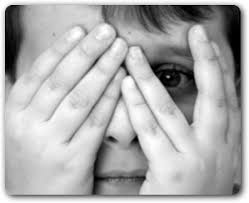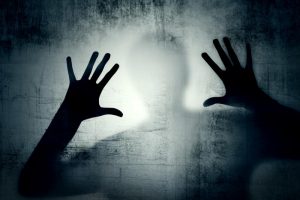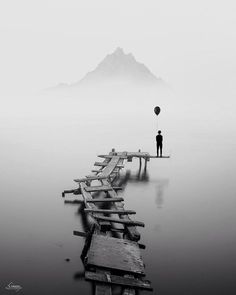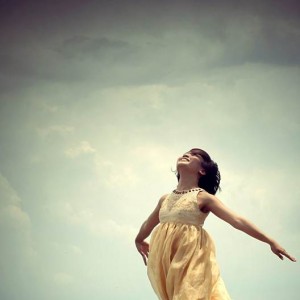 Our Moving into Meditation class continues to draw inspiration from Frank Ostaseski’s wonderful book about living with the awareness that we’re going to die. His book distills what he’s learned into Five Invitations we can answer in living a conscious life. In today’s class we continued working with the fourth invitation. Frank encourages us to accept fear as our teacher. Can we remain present with feeling our fears long enough to learn from which well they spring? Activist, teacher and farmer Steven Jenkinson’s book Die Wise contains a similar message: to wonder at the truly awesome nature of life – to witness each other so that we may think “unauthorized thoughts.” And finally, American theologian and writer Frederick Buechner urges us to listen for “The unexpected sound of your name on somebody’s lips. . . . The moment that brings tears to your eyes. The person who brings life to your life.”
Our Moving into Meditation class continues to draw inspiration from Frank Ostaseski’s wonderful book about living with the awareness that we’re going to die. His book distills what he’s learned into Five Invitations we can answer in living a conscious life. In today’s class we continued working with the fourth invitation. Frank encourages us to accept fear as our teacher. Can we remain present with feeling our fears long enough to learn from which well they spring? Activist, teacher and farmer Steven Jenkinson’s book Die Wise contains a similar message: to wonder at the truly awesome nature of life – to witness each other so that we may think “unauthorized thoughts.” And finally, American theologian and writer Frederick Buechner urges us to listen for “The unexpected sound of your name on somebody’s lips. . . . The moment that brings tears to your eyes. The person who brings life to your life.”
Guided Relaxation
Welcome to this moment . . . feel yourself arriving . . . awareness permeating your body . . . resting in areas of sensation . . . letting the breath be easy . . . natural . . . calming your body with every passing moment . . . calm body gradually calming mind . . . perhaps extending an inner smile to those flights of thought that carry you into the past or forward into the future . . . let the energy of that smile bring you back to your breathing . . . your body feeling . . . being curious about the natural expressions of breath . . . sometimes there are pauses between the exhalation and the inhalation . . . can you let yourself be curious about the utter stillness between breaths . . . and then the breath hunger that urges the body to breathe again . . .
 So often we hold our breath in moments of stress or we stop breathing altogether . . . can we consciously recognize the physiological signature of these moments? The manner in which the heart beats . . . changes in body temperature . . . sweaty palms . . . areas of muscle tension . . . sometimes there is just an utter absence or fog in the mind . . .
So often we hold our breath in moments of stress or we stop breathing altogether . . . can we consciously recognize the physiological signature of these moments? The manner in which the heart beats . . . changes in body temperature . . . sweaty palms . . . areas of muscle tension . . . sometimes there is just an utter absence or fog in the mind . . .
Frank O. writes:
“. . . When fear speaks, courage is the heart’s answer. . . . Life does not always present itself in ways that are right or reasonable. . . . we are rarely in control of . . . twists and turns of fate, and most especially not of our deaths. . . . “
The Buddhist tradition describes
. . . “great and courageous bodhisattvas” . . . beings who . . . have the fortitude to stand with suffering . . . able to maintain a courageous presence while they are afraid. They open to fear and are willing to hold it, learn from it and be transformed by it. . . . fear serves as a catalyst, a doorway to compassion and a pathway to transformation for all beings who are afraid. . . . courageous presence is not only for the rare bodhisattvas . . . . Ordinary people put courageous presence into practice in small beautiful ways every single day.”
 The willingness to sit with fear is an act of courage. We just danced with it by subjecting ourselves to breath hunger – experiencing that primal urge – the survival response – to take the breath that sustains us. Our fears are human and sometimes quiet necessary. And all fear is subjective. It can arise from a valid perception of threat or from a distorted view, an imaginary threat. We can scare ourselves with our thoughts. The impact on our bodies, our hearts our minds is the same – it feels real. Frank suggests that “. . . it’s best not to treat fear as the absolute truth.”
The willingness to sit with fear is an act of courage. We just danced with it by subjecting ourselves to breath hunger – experiencing that primal urge – the survival response – to take the breath that sustains us. Our fears are human and sometimes quiet necessary. And all fear is subjective. It can arise from a valid perception of threat or from a distorted view, an imaginary threat. We can scare ourselves with our thoughts. The impact on our bodies, our hearts our minds is the same – it feels real. Frank suggests that “. . . it’s best not to treat fear as the absolute truth.”
We can reflect on how our fears might be narrowing our vision or restricting our lives to what is comfortable and familiar – do we continually travel down the same habit trails? Do we reject invitations to the unknown without fully considering them? Are we quick to identify precautions or protections for ourselves and our loved ones? These are also very human tendencies. Can we relax our vigilance enough to take those risks that will allow us to truly flourish? Can we feel the fear of conflict and disapproval and draw on inner resources to stand for our truth?
There are so many ways in which fear manifests in our lives – it is lightening fast – below the level of language. Sometimes the best thing we can do is to become aware of its physiological expression in our bodies. That might be our first opportunity to recognize fear. Can we relate to fear as our teacher? Can we remain present just with what we are feeling in our bodies? Can we let time pass as sensations arise? Can we breathe with them as they move? How might our fears change in the space of a calm, abiding presence? This courageous presence that remains even with the voice that whispers or shouts that this experience will overwhelm us.
 We may come to realize that we are not alone. Our armor and defenses give us the illusion of separation . . . yet we don’t have to separate. We don’t have to live within the fear’s restrictions . . . In abiding presence we can disentangle our emotional states from the objects we fear . . . we can step out of our struggles with fear and connect with the emotional state it manifests . . . Frank describes this process as “taking fear as our teacher and learning to work with it . . . [which] can lead us to some degree of inner freedom.” In abiding presence we begin to see the part we play in the process of our fear experience. Staying with the experience, breathing calmly, steadily the mind’s operations are revealed. We can gradually relax as the beliefs, assumptions, memories and stories begin to surface. We defuse the reactive impulse to run away or feel overwhelmed.
We may come to realize that we are not alone. Our armor and defenses give us the illusion of separation . . . yet we don’t have to separate. We don’t have to live within the fear’s restrictions . . . In abiding presence we can disentangle our emotional states from the objects we fear . . . we can step out of our struggles with fear and connect with the emotional state it manifests . . . Frank describes this process as “taking fear as our teacher and learning to work with it . . . [which] can lead us to some degree of inner freedom.” In abiding presence we begin to see the part we play in the process of our fear experience. Staying with the experience, breathing calmly, steadily the mind’s operations are revealed. We can gradually relax as the beliefs, assumptions, memories and stories begin to surface. We defuse the reactive impulse to run away or feel overwhelmed.
Frank writes . ..
“One way we express courageous presence is through the mindful practice of touching with mercy and tenderness that which we previously touched only with fear.”
He describes the “courage of the heart” we need to discover true freedom and to face life’s ultimate difficulties – even death.
 “Courage of the heart asks us to be undefended. It is the courage to feel, to allow both beauty and horror to touch us. It calls for a different kind of fearlessness. . . The courage of a strong heart activates fearless receptivity to what is happening, which creates space for us to recognize, explore and integrate our fear. . . . we can include whatever it is that we had wanted to avoid. . . . this type of courage opens us to a deep compassion for the suffering of all beings.
“Courage of the heart asks us to be undefended. It is the courage to feel, to allow both beauty and horror to touch us. It calls for a different kind of fearlessness. . . The courage of a strong heart activates fearless receptivity to what is happening, which creates space for us to recognize, explore and integrate our fear. . . . we can include whatever it is that we had wanted to avoid. . . . this type of courage opens us to a deep compassion for the suffering of all beings.
We realize that we all have fears and like bodhisattvas, we stand with others in their fear.”
From Stephen Jenkinson’s Die Wise:
“You need witnesses for wonder. Some things in life are too hard to see by yourself because they take up the whole sky, or because they happen every day, unwinding above your busyness, or because you thought you knew them already, Wonder takes a willingness to be uncertain, to be thrown. . . . starlight traveling a bewildering distance for so long that there is every chance that it doesn’t even exist anymore, and all of that having already happened, and you standing there, your face blazed in the dark by a starlight gone, seeing it all, what is and what isn’t there enthroned by your witness: That is a marvel and surely that is how awe is born in us. With somebody there alongside you in the darkness, you can think unauthorized thoughts. You can see what’s gone . . . Fantastic.”
And from Frederick Buechner’ poem:
FOUND
Maybe it’s all utterly meaningless.
Maybe it’s all unutterably meaningful.
If you want to know which,
pay attention to
 what it means to be truly human
what it means to be truly human
in a world that half the time
we’re in love with
and half the time
scares the hell out of us…
The unexpected sound of your name on somebody’s lips.
The good dream.
The strange coincidence.
The moment that brings tears to your eyes.
The person who brings life to your life.
Even the smallest events hold the greatest clues.
Thinking of you and tending to what it means to be truly human.
